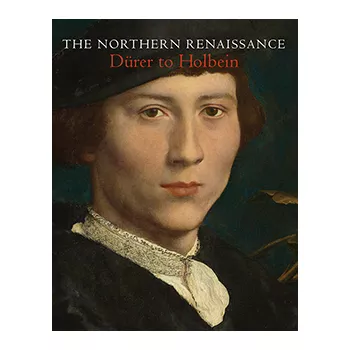The Calling of St Matthew 1530s
Oil on panel | 181.2 x 170.5 cm (support, canvas/panel/stretcher external) | RCIN 405788
-
Jan Mertens was previously known as the Master of the Abbey of Dilighem, taking an altarpiece of The Life of the Magdalen painted for the Abbey of Dilighem (just outside Brussels) as an identifying starting point. This artist is now thought to have been Jan Mertens the Younger, son of the sculptor Jan Mertens the Elder (active c.1473-1509). Mertens the Younger registered with the Antwerp guild in 1509, having previously trained with Jan Gossaert. It has been suggested that he taught Pieter Coeck van Aelst, who married his daughter Anna in the 1520s. The influence of Gossaert can be seen in Mertens’s paintings, particularly in his inclusion of narrative details irrelevant to the main thrust of the story and of symbolic plants. For instance, in the foreground of the present work Mertens includes columbine to symbolise fear of God.
The Calling of St Matthew is an elaborate painted version of the biblical story in which Jesus ‘saw a man, named Matthew, sitting at the receipt of custom: and he saith unto him, Follow me. And he arose, and followed him’ (Matthew 9:9). The moment of Matthew’s calling is elegantly expressed through Christ’s directional movement to his right, and through Matthew’s eager compliance in stepping out of his magnificent tax collecting booth while raising his cap as though in deference to his new master. The story is continued in the background right with a glimpse through an ornately carved architectural opening where Christ feasts in Matthew’s house. This large-scale panel was probably originally commissioned for an altar (perhaps the high altar) of a Catholic church. The combination of storytelling in the full-length foreground figures of Christ, St Matthew and eight apostles with the smaller-scale narratives in the harbour behind would have aided the altarpiece’s original function, to be viewed both from a distance and for more in-depth contemplation. The unusual shape of the panel and the inclusion of rich Renaissance architectural decoration within the painting may reflect its original intended location.
The artist has included a monkey in the space between Christ and Matthew. Its attention is caught by some shiny coins and it ignores its food in order to inspect the treasures more closely. This creature acts as a narrative foil to St Matthew; while the tax collector chooses to turn his back on worldly goods and a profitable lifestyle, the monkey chooses the opposite, abandoning sustenance in favour of ultimately worthless wealth. To the right of St Matthew two figures continue to count money. The scales on the ledge in the foreground illustrate the moral futility of such action, as the coin being weighed is not balanced, bringing to mind words from the Old Testament: ‘Thou art weighed in the balances, and art found wanting’ (Daniel 5:27).
Catalogue entry adapted from The Northern Renaissance. Dürer to Holbein, London 2011Provenance
Given by an unnamed donor to Charles I; recorded in the Adam and Eve Stairs Room at Whitehall in 1639 (no 13); not listed in the Commonwealth Sale and in the King's Gallery at Hampton Court in 1666 (no 119) and 1688 (no 949); taken to Kensington Palace around 1710, it remained there for the next century, appearing in the Old Drawing Room (or Queen's Dining Room) in Pyne's illustrated 'Royal Residences' of 1819 (RCIN 922153); in the Picture Gallery at Buckingham Palace in 1841 (no 182)
-
Creator(s)
Acquirer(s)
-
Medium and techniques
Oil on panel
Measurements
181.2 x 170.5 cm (support, canvas/panel/stretcher external)
205.0 x 197.4 x 8.7 cm (frame, external)
Category
Object type(s)
Other number(s)
Alternative title(s)
Christ calling Matthew from the receipt of custom, previously entitled










